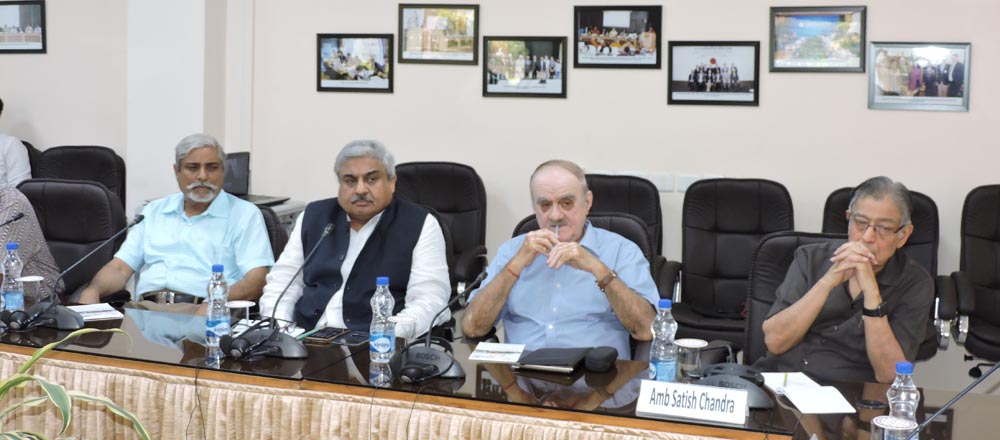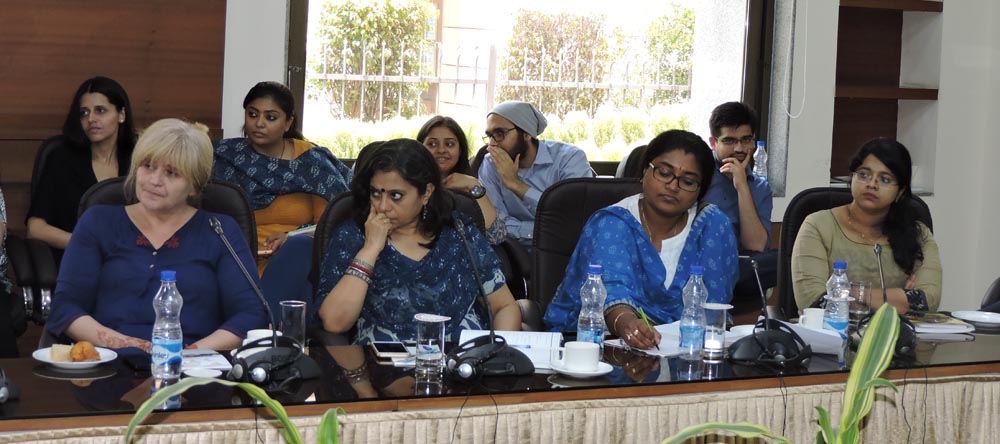

Vivekananda International Foundation (VIF) organised a lecture cum discussion by Dr. Shashibala, Dean at the Centre of Indology, Bhartiya Vidya Bhavan. The topic of the lecture cum discussion was ‘Echoes of Indian Culture in China’. Dr. Arvind Gupta, Director VIF chaired the proceedings. The major theme of the discussion was to highlight the prominent aspects of Indian influence in shaping and moulding the Chinese culture as we know it today.
Dr. Shashibala beautifully juxtaposed the historical connections and the movement of ideas and things between India and China. She argued that the name China is derived from a Sanskrit word which can be translated as ‘the areas to the east’. She argued that the concepts of ‘Monkey King’ and folklore in China are heavily influenced by the Indian tales carried by Indians travelling for business. The prominent place which the symbol of horse enjoys in the Chinese culture is also heavily drawn from the Indian concept of ashwamedha yagnas which the Indian kings undertook. The Chinese were also intrigued with the idea of achieving immortality and thus they regularly employed Indian Ayurveda experts in the hope of attaining the impossible.

The role which Buddhism played in shaping the Chinese culture cannot be overstated. China today has one of the most prominent Buddhist population. It was the curiosity about this religion that brought a large number of Chinese to India in search of information and knowledge. Chinese scholars like Faxian, Sung Yun, Xuan Zang and I-tsing, were among the few who visited India. Their travel was motivated with the aim of finding the original Buddhist scriptures in Sanskrit and Pali. Thus it is no surprise that The Chinese literature has a large influence of geographic and mythological features from India. A large number of Indian scholars also travelled to China to help the monks and kings in translating major Sanskrit and Buddhist texts to Chinese, among them were Kumarajeeva who became Rajguru in Xian and Bodhidharma, who introduced Dhyana Yoga and Buddhism to China and East Asia (known as Zen Buddhism).

The Indian influence is seen in the food habits of the Chinese people as well, as it was India which introduced the process of sugar making to them. Cultivation of cotton and the use of cotton for making paper was also a major contribution of India to the Chinese culture. Indian influence is also very prominent in the Chinese music and dance forms while Yoga became a crucial element in shaping the type of movements practiced by the Taoists in China. The architectures of the earlier Chinese temples and monasteries were based on the structures of the ancient Indian temples. The speaker also stated that both Kashgar and Xian were great centers of Vedic studies, Buddhism and Sanskrit.
The talk generated good interest and there were many points of discussion.
Director, VIF, Dr. Arvind Gupta suggested that in the coming months, Dr Shashibala will be delivering a few more lectures on similar themes at the VIF.
Links:
[1] https://www.vifindia.org/event/report/2018/july/04/talk-by-dr-shashibala-on-echoes-of-indian-culture-in-china
[2] http://www.facebook.com/sharer.php?title=Talk by Dr. Shashibala, Dean, Centre for Indology, Bhartiya Vidya Bhavan, on ‘Echoes of Indian Culture in China’&desc=&images=https://www.vifindia.org/sites/default/files/DSCN3056_0.JPG&u=https://www.vifindia.org/event/report/2018/july/04/talk-by-dr-shashibala-on-echoes-of-indian-culture-in-china
[3] http://twitter.com/share?text=Talk by Dr. Shashibala, Dean, Centre for Indology, Bhartiya Vidya Bhavan, on ‘Echoes of Indian Culture in China’&url=https://www.vifindia.org/event/report/2018/july/04/talk-by-dr-shashibala-on-echoes-of-indian-culture-in-china&via=Azure Power
[4] whatsapp://send?text=https://www.vifindia.org/event/report/2018/july/04/talk-by-dr-shashibala-on-echoes-of-indian-culture-in-china